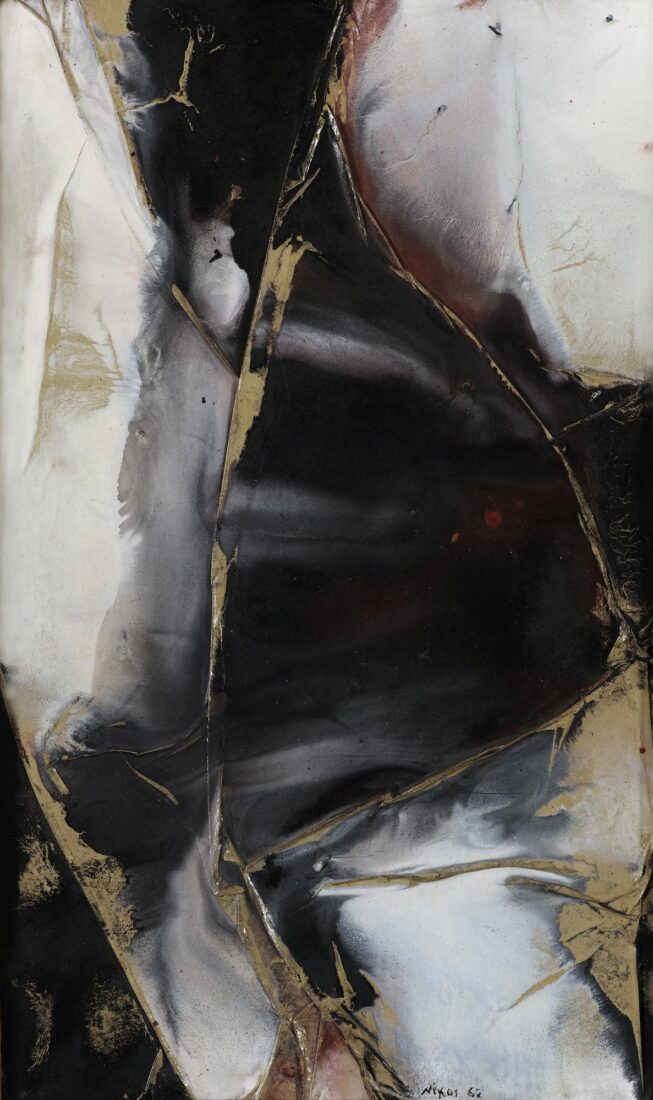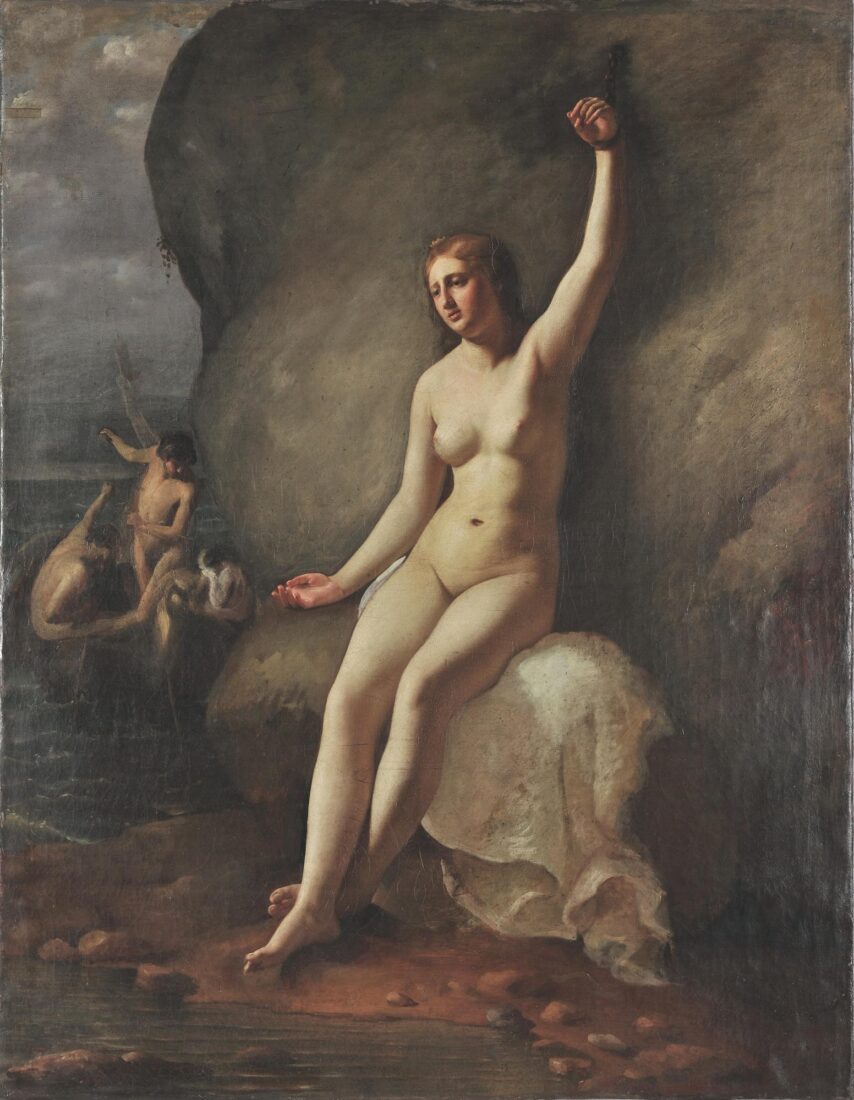

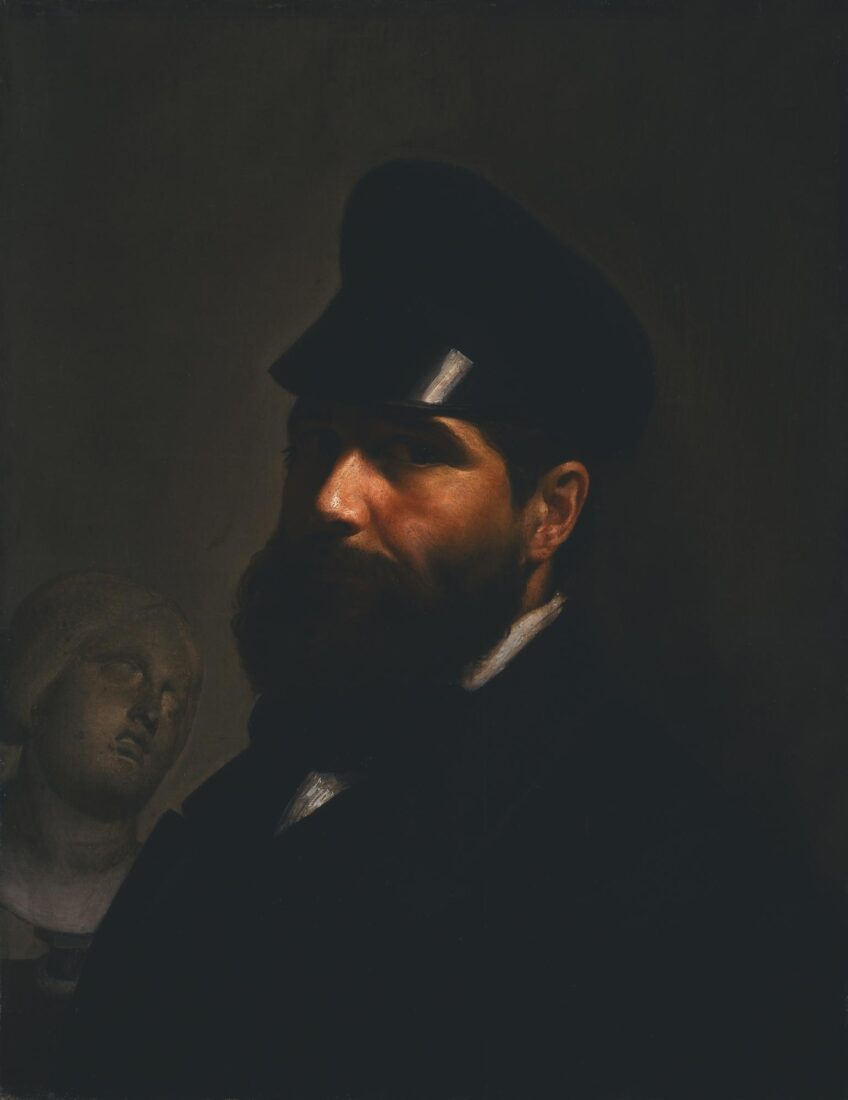
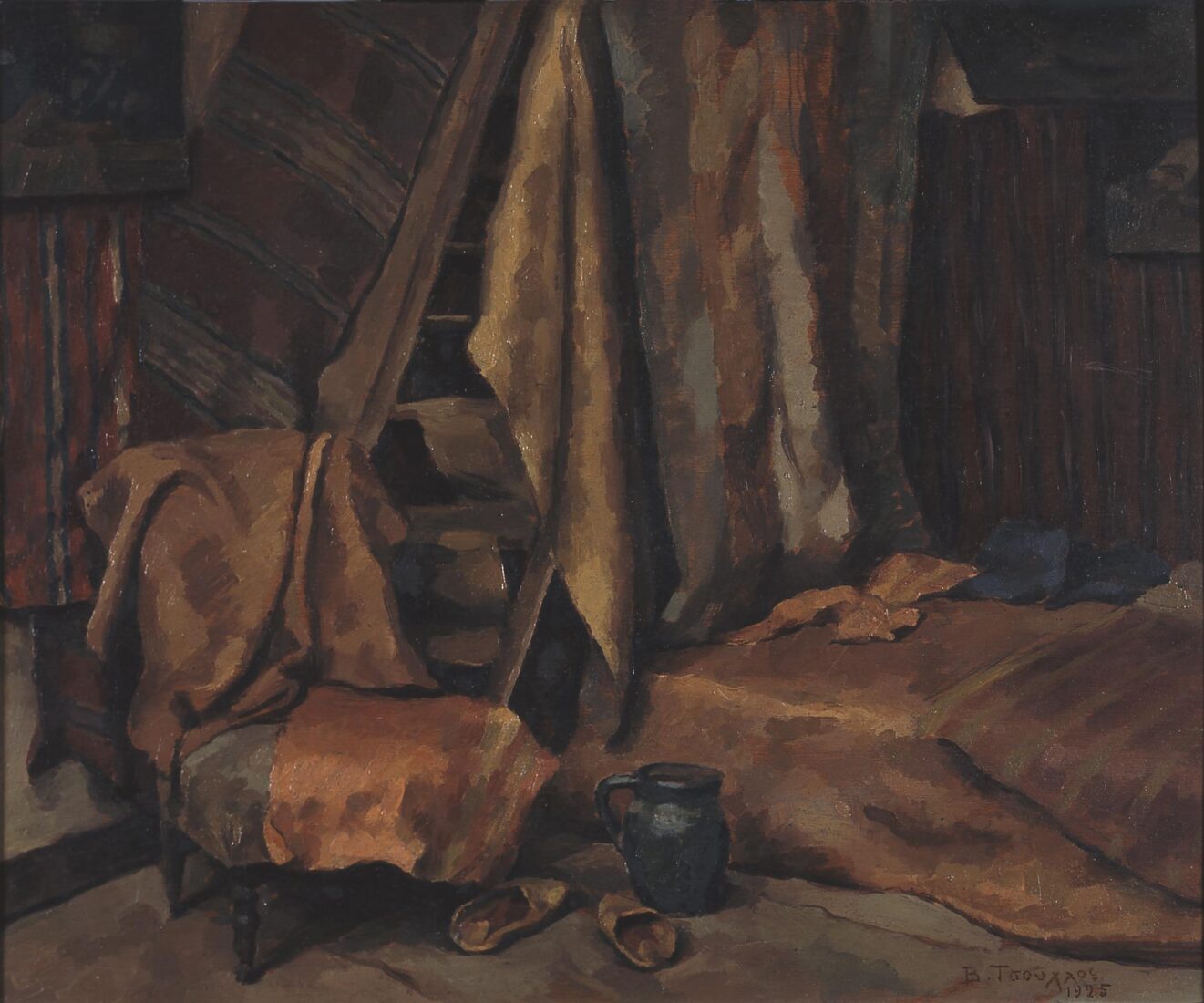
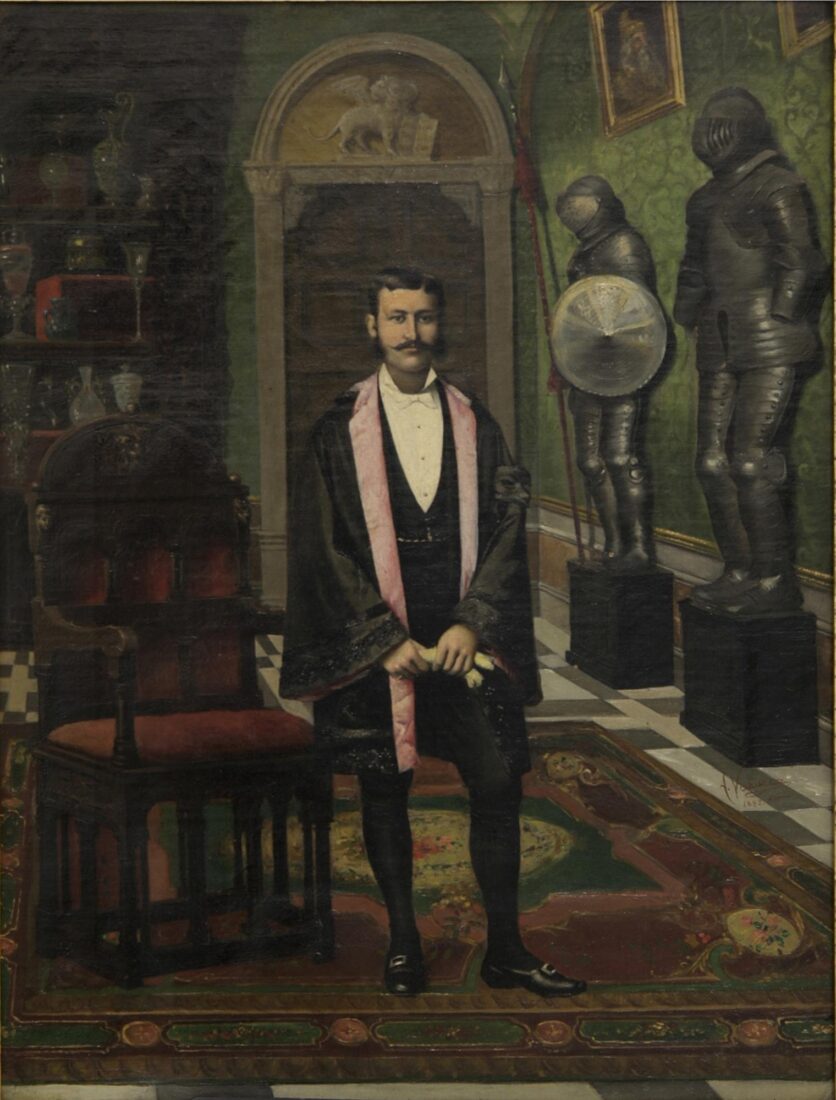
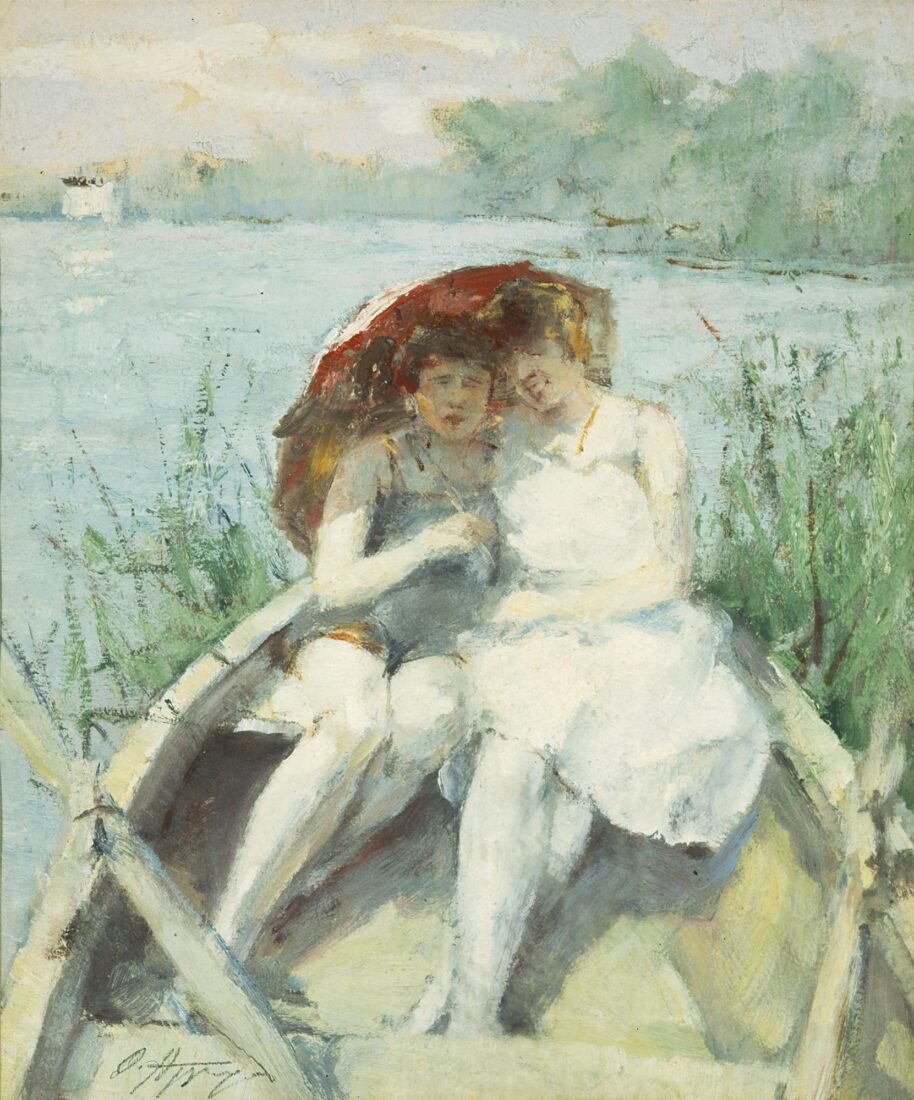
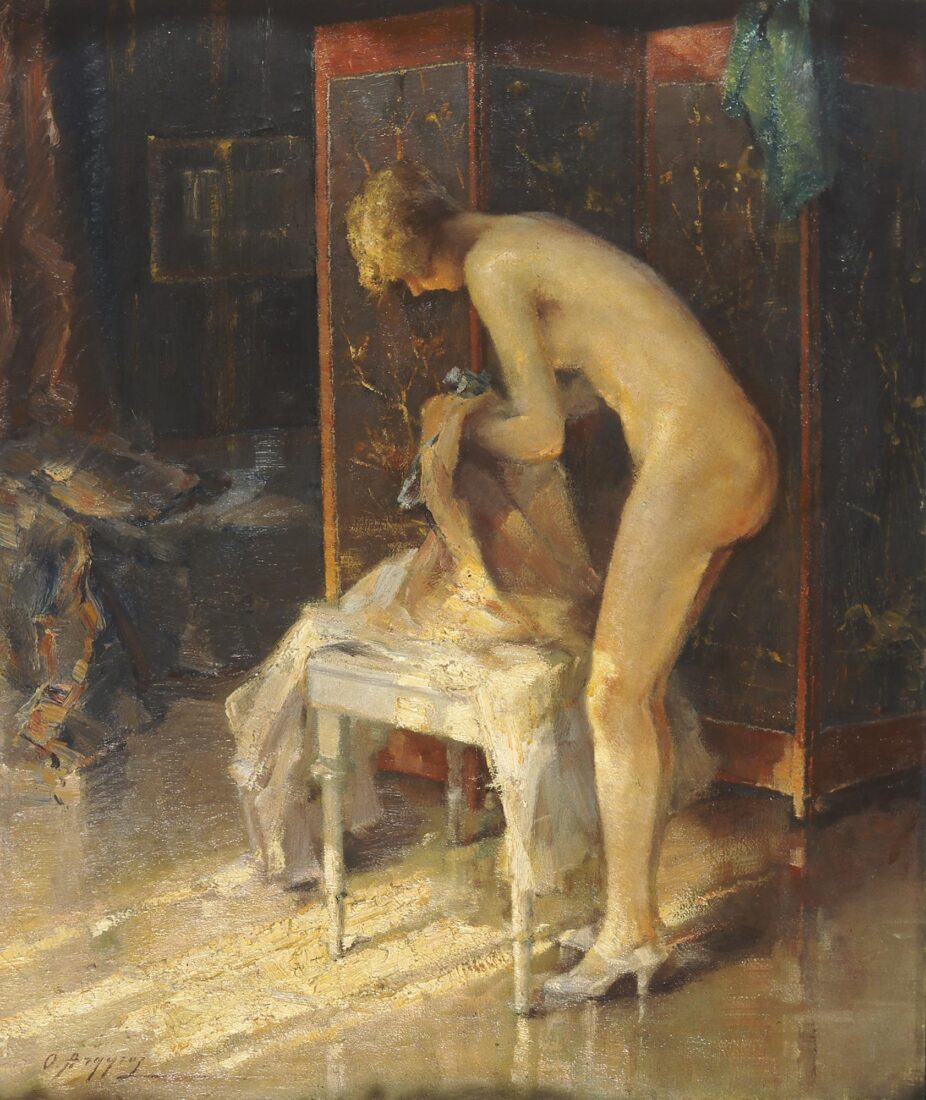
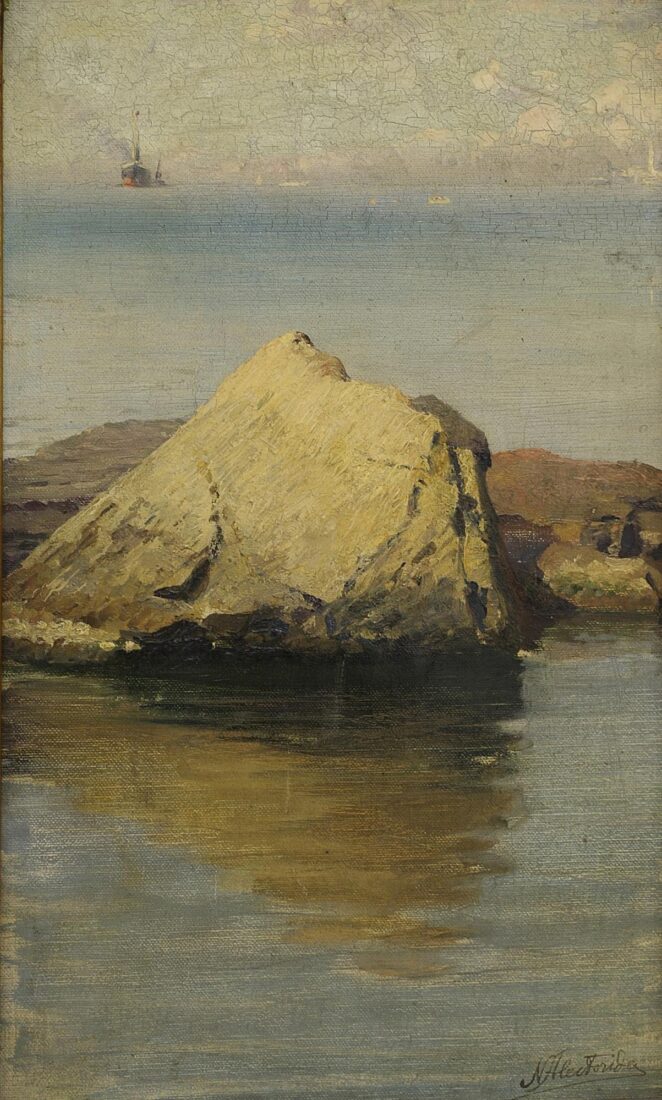
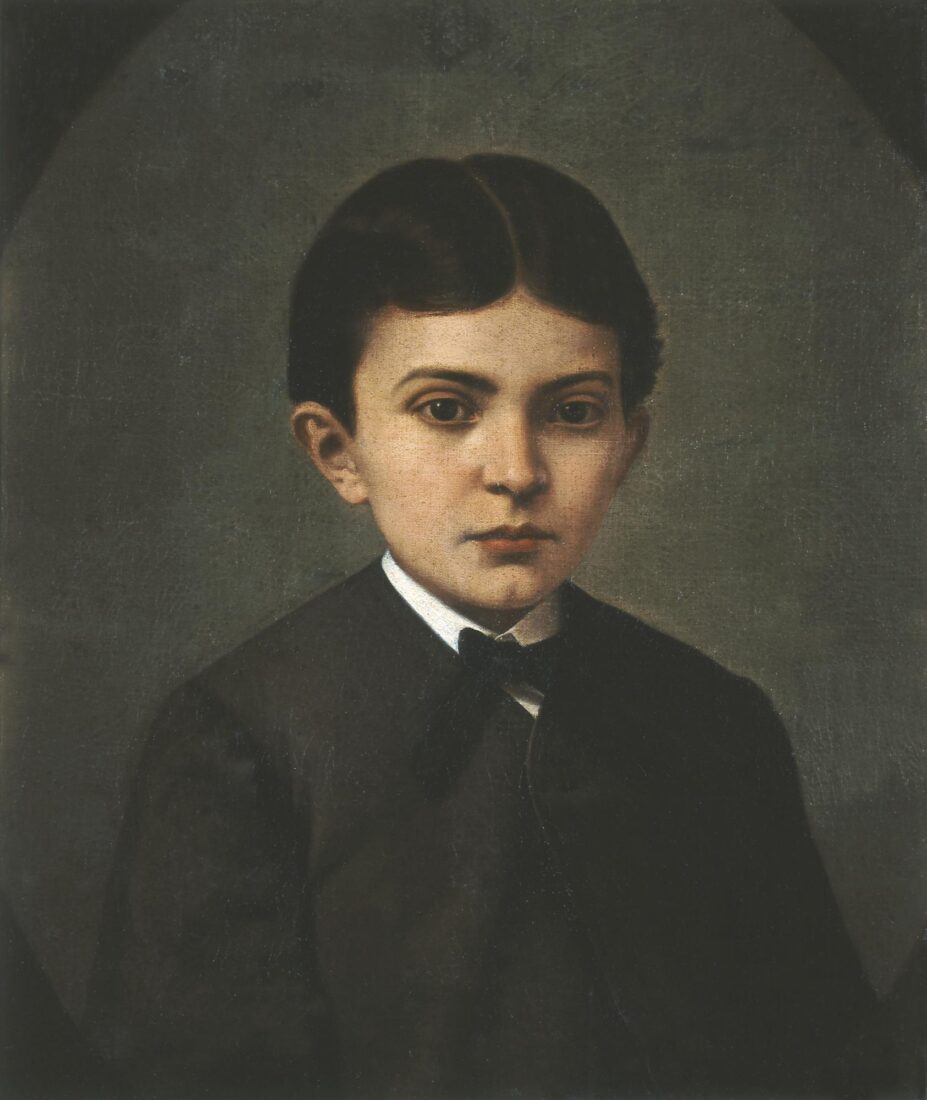
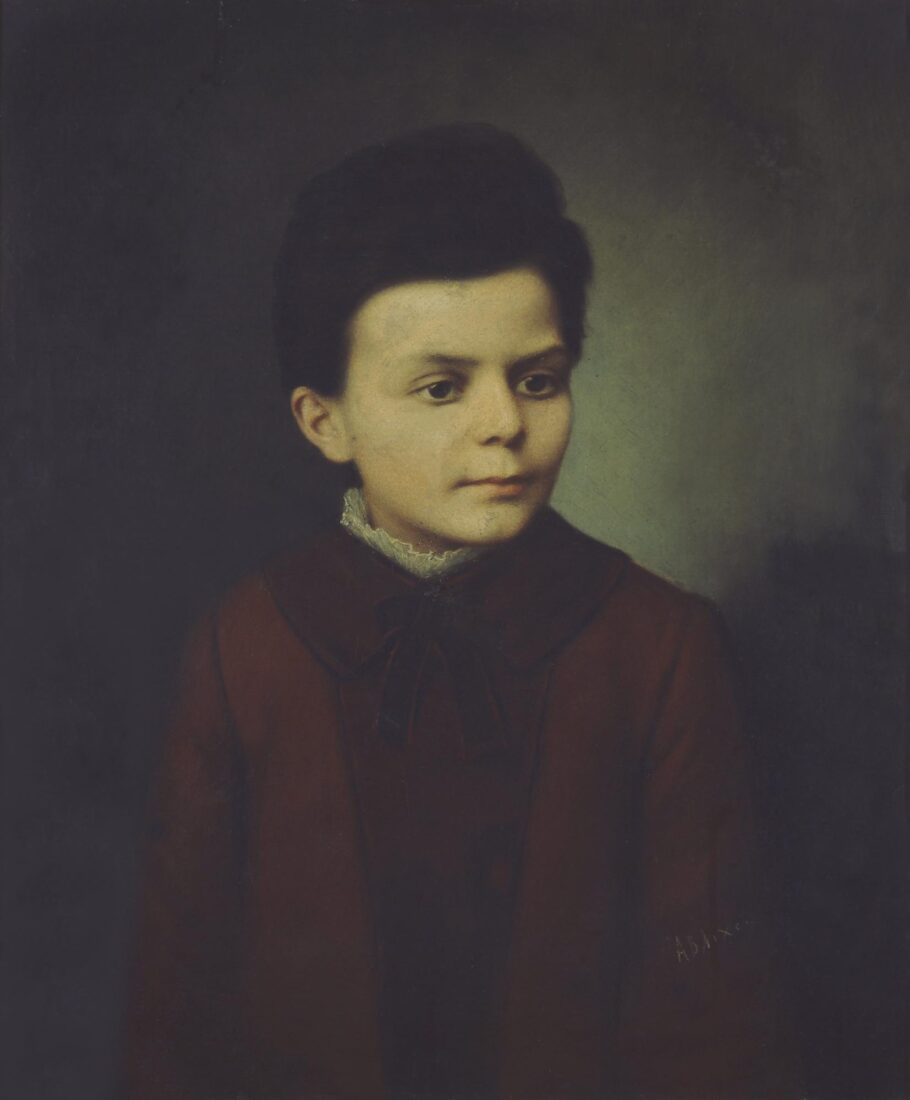
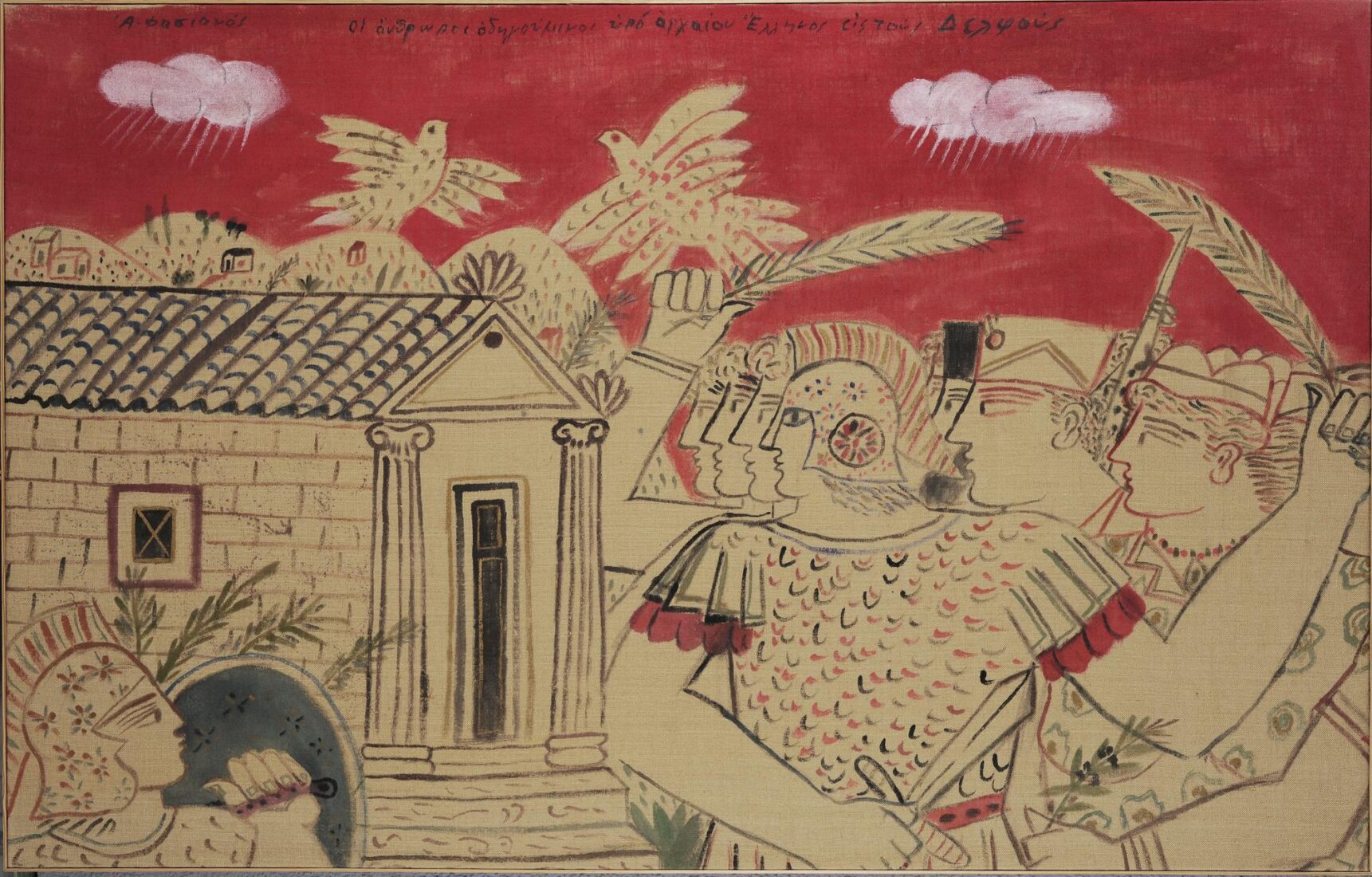
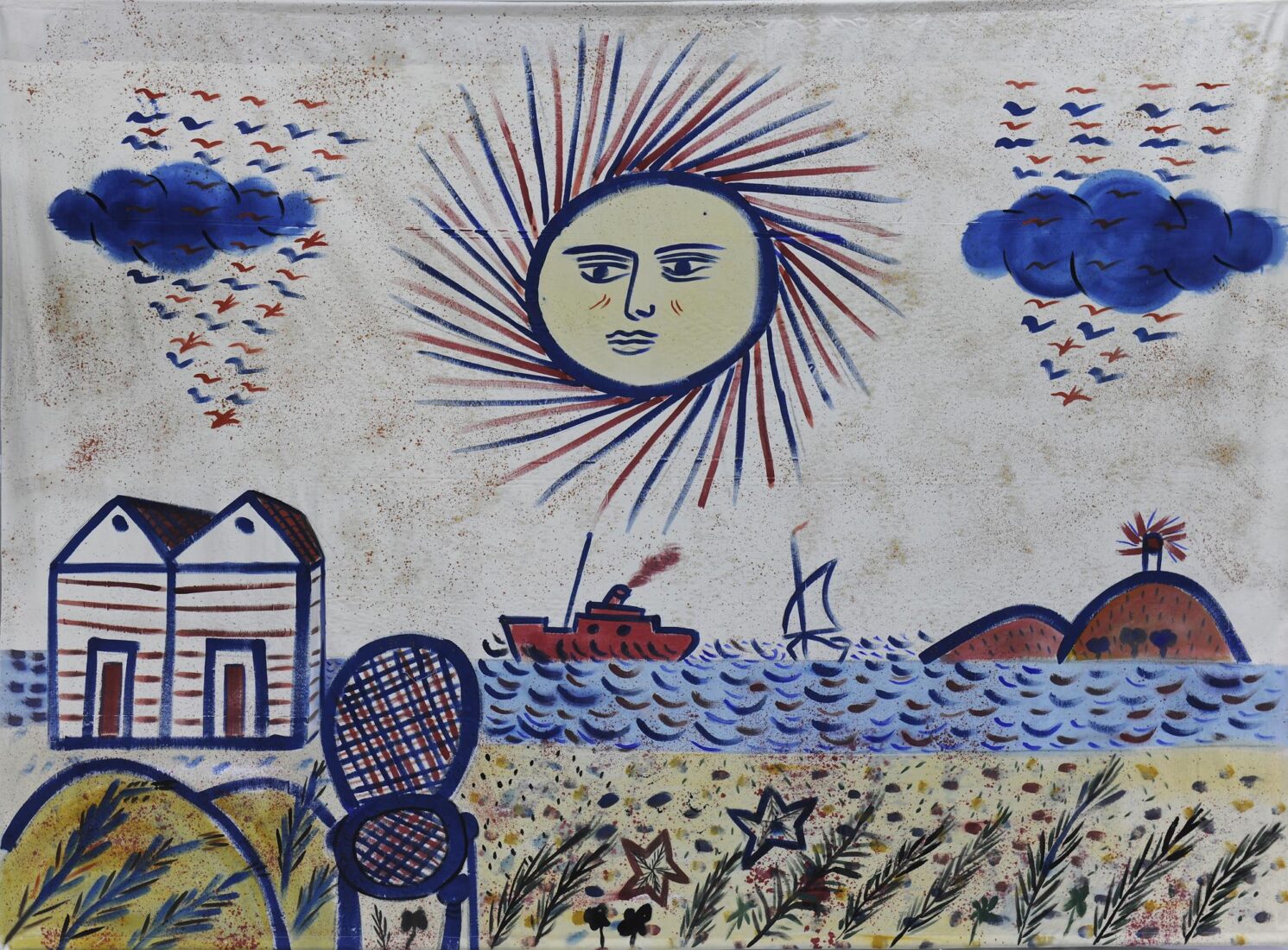
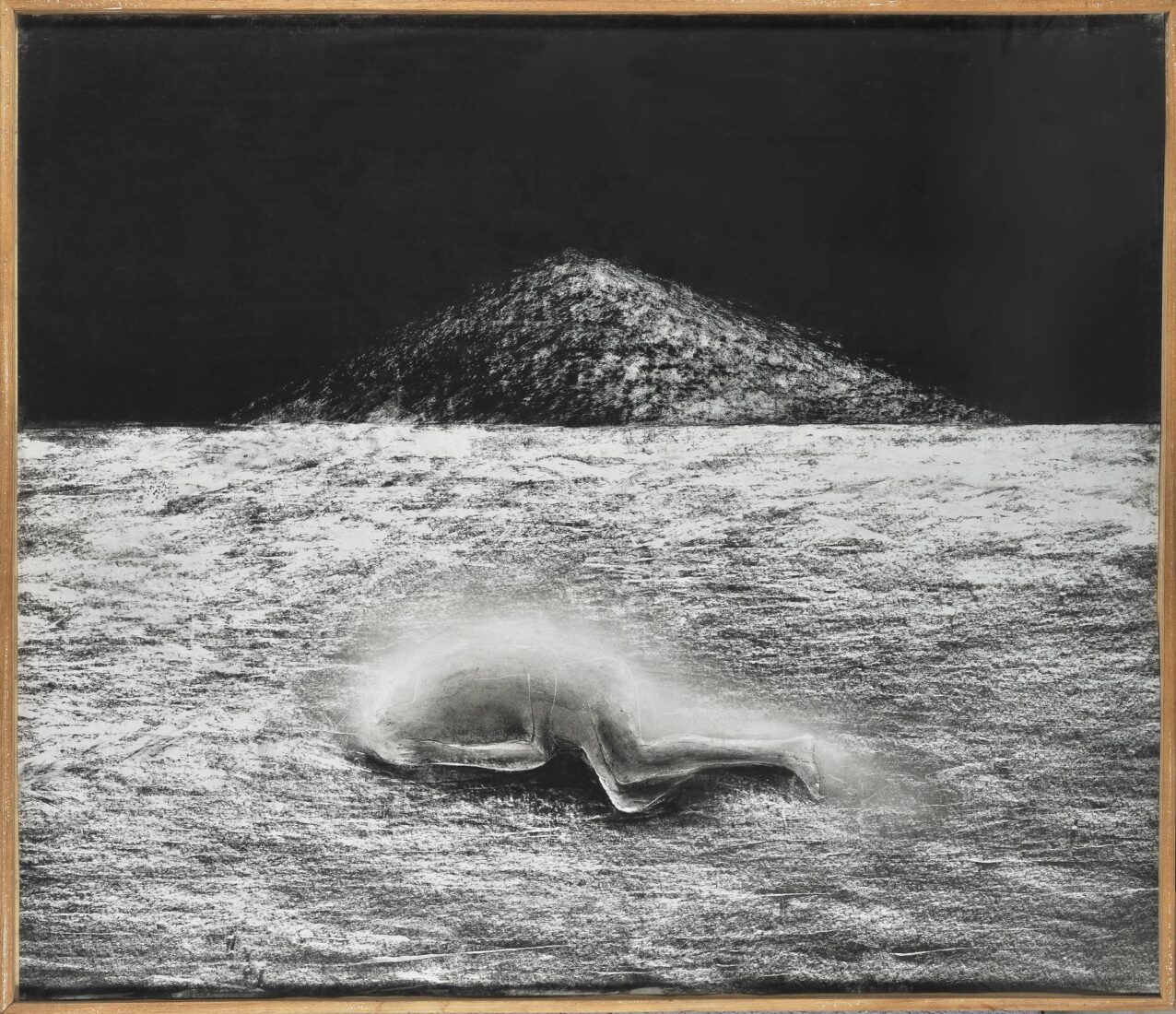
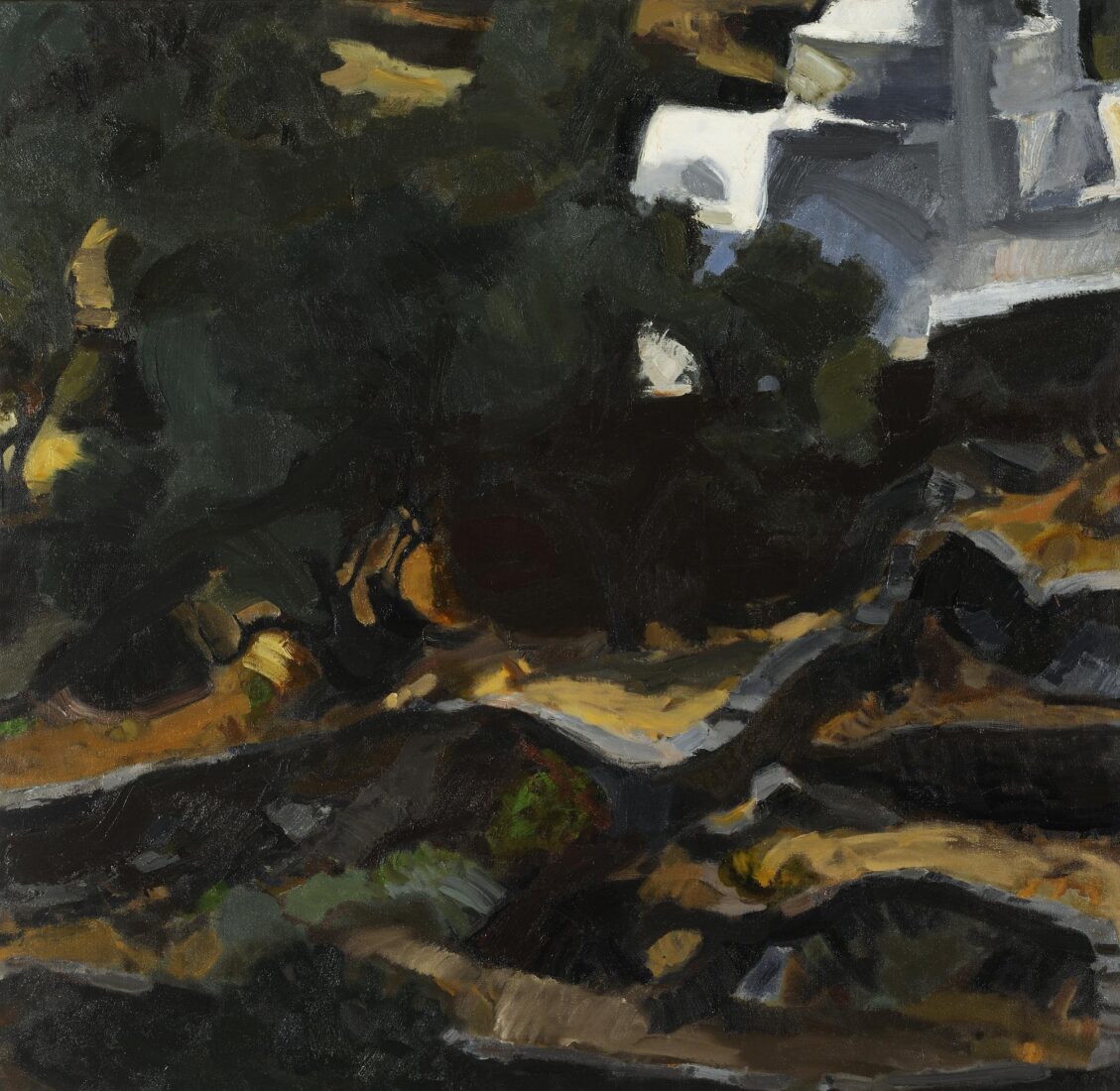
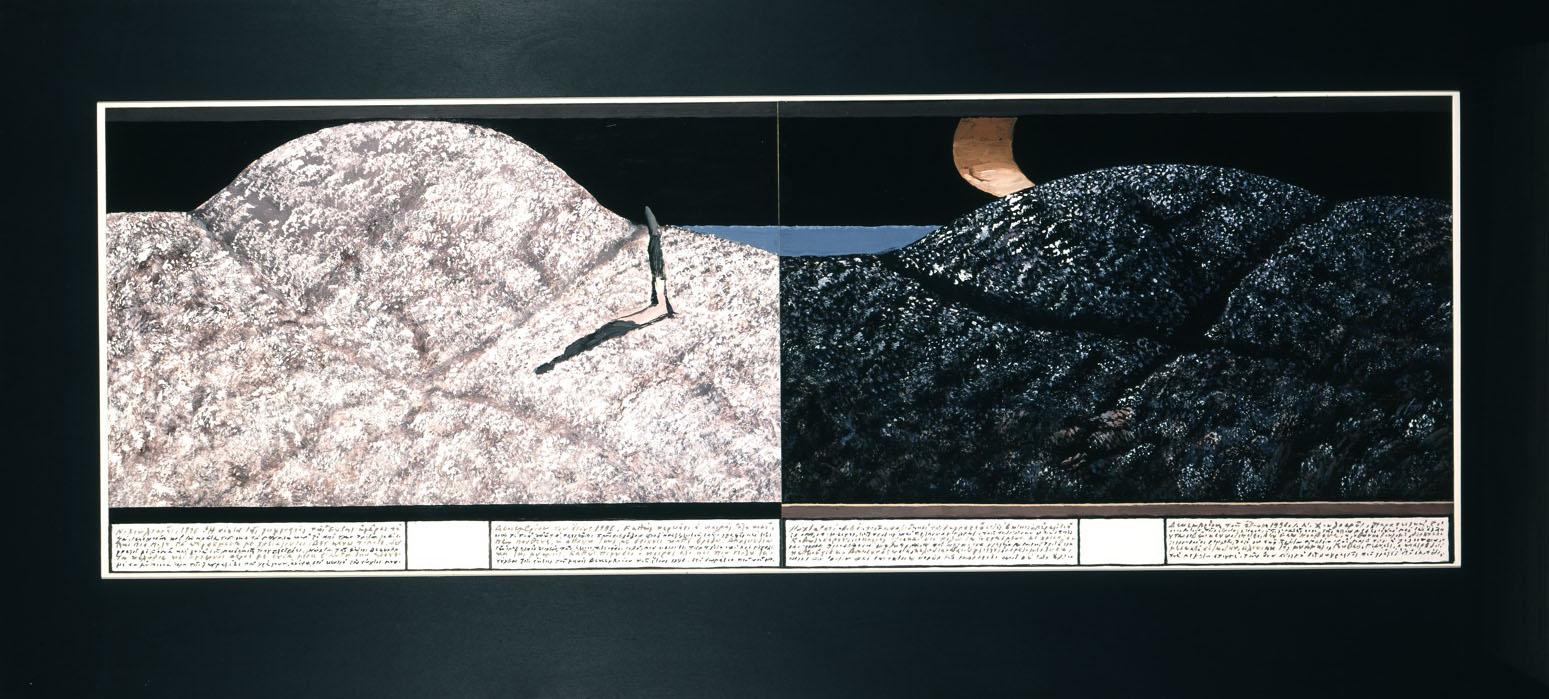
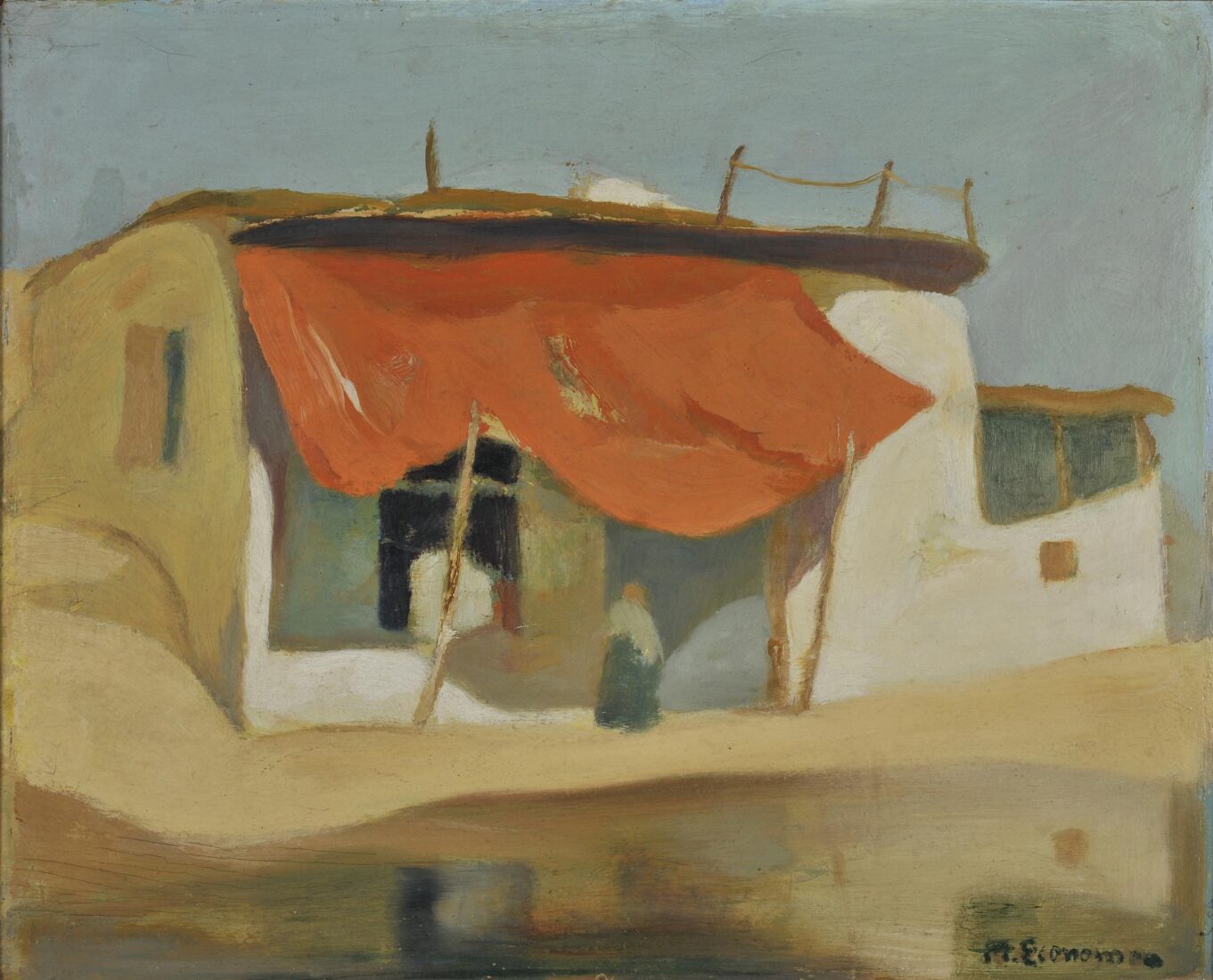
This familiar fishing hut, resting on a quiet beach, is rather like a vision invoked by memory. An orange-red awning casts its blue shadow on the whitewashed facade. A female figure is incorporated into the shade, barely visible. An open door enables the artist to add black colour in his composition, providing tension and life for the other colours: the white wall, the ochre sand, the red tent, the deep blue summer sky and shade. The familiar interplay of cool and warm colours, and of complementary ones, is paramount here, too. Note the shapes: how fluid and wavy they are. No solid straight line, no rigid shape are anywhere to be seen here. Everything seems vibrant, breathing. It is as if one looked at the reflection of a landscape through the soul’s eye, the eye of longing.
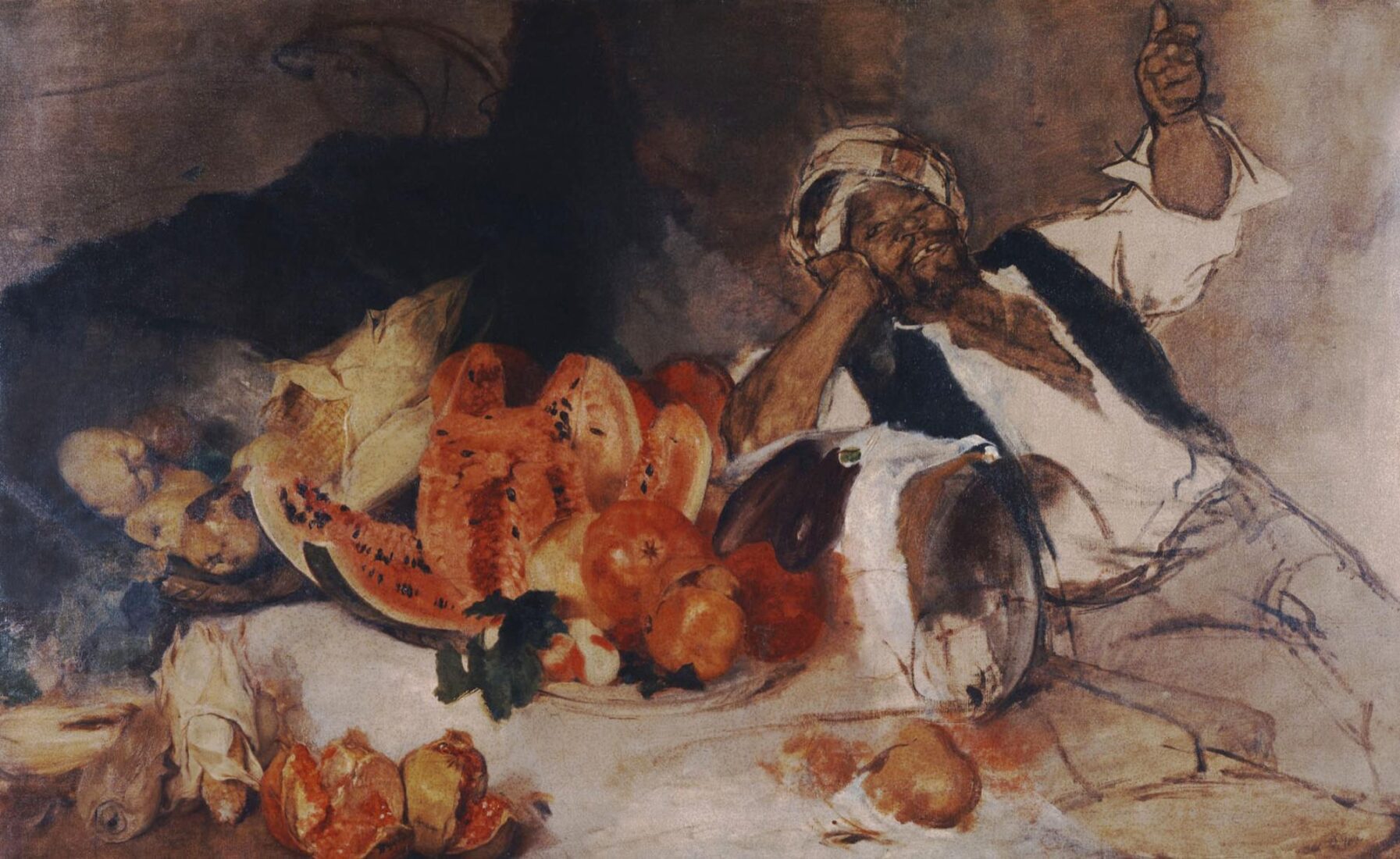
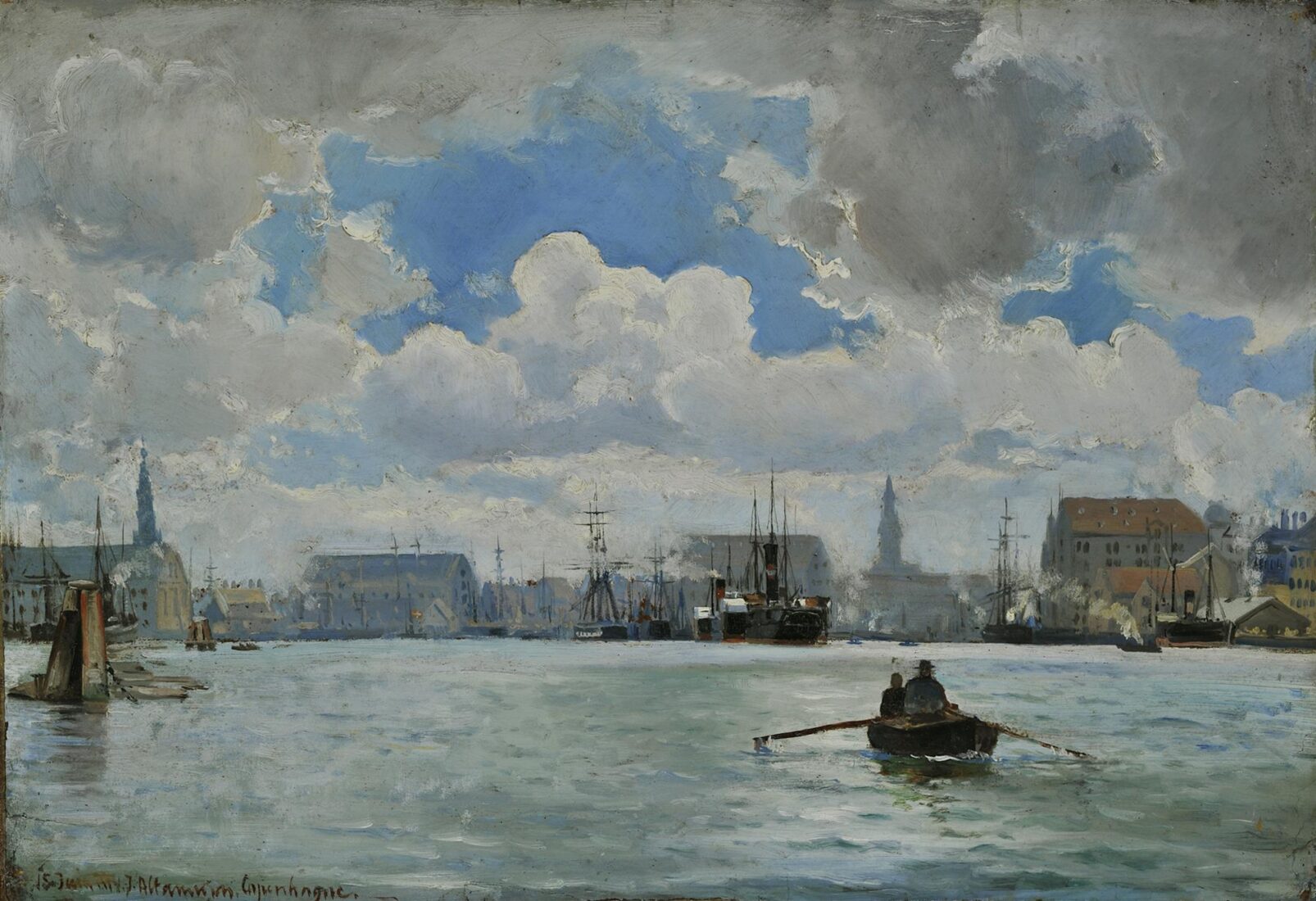
Following his graduation from the Athens School of Arts, Ioannis Altamouras continued his studies in Copenhagen, Denmark, encouraged by King George I of Greece. Although he died very young, when he was still 26, he managed to produce several works which can arguably be considered as true pre-Impressionist art. One of them is the “Copenhagen Harbour”, made in 1874, that is, the same year when the first Impressionist group exhibition was organised in Paris. In this painting, the Copenhagen shore, with the dimly delineated buildings, the castles, the smoking smokestacks and the great ships at anchor, is a dark horizontal line, splitting the painting surface into two. One third is occupied by the sea, where a dark rowing boat can be seen, and two thirds are taken up by a sky with fleeting clouds. Water and sky are the main elements in this painting. In fact, time is the true protagonist here, flying and changing the face of the world from one moment to the next. Using swift brush strokes in order to capture these fleeting phenomena, the painter records the shifts of colour and their iridescence on the waves. Note the great variety of colours in the clouds and see if you can identify their respective reflections on the water. Complementary couples of blue-grey, orange-ochre and violet prevail.
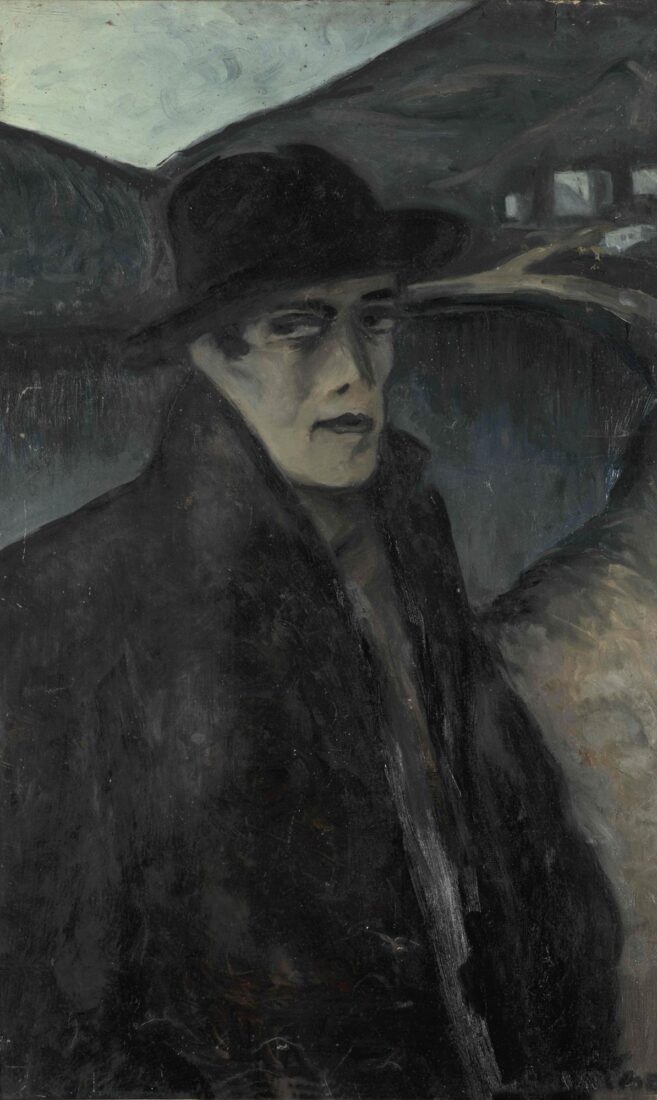
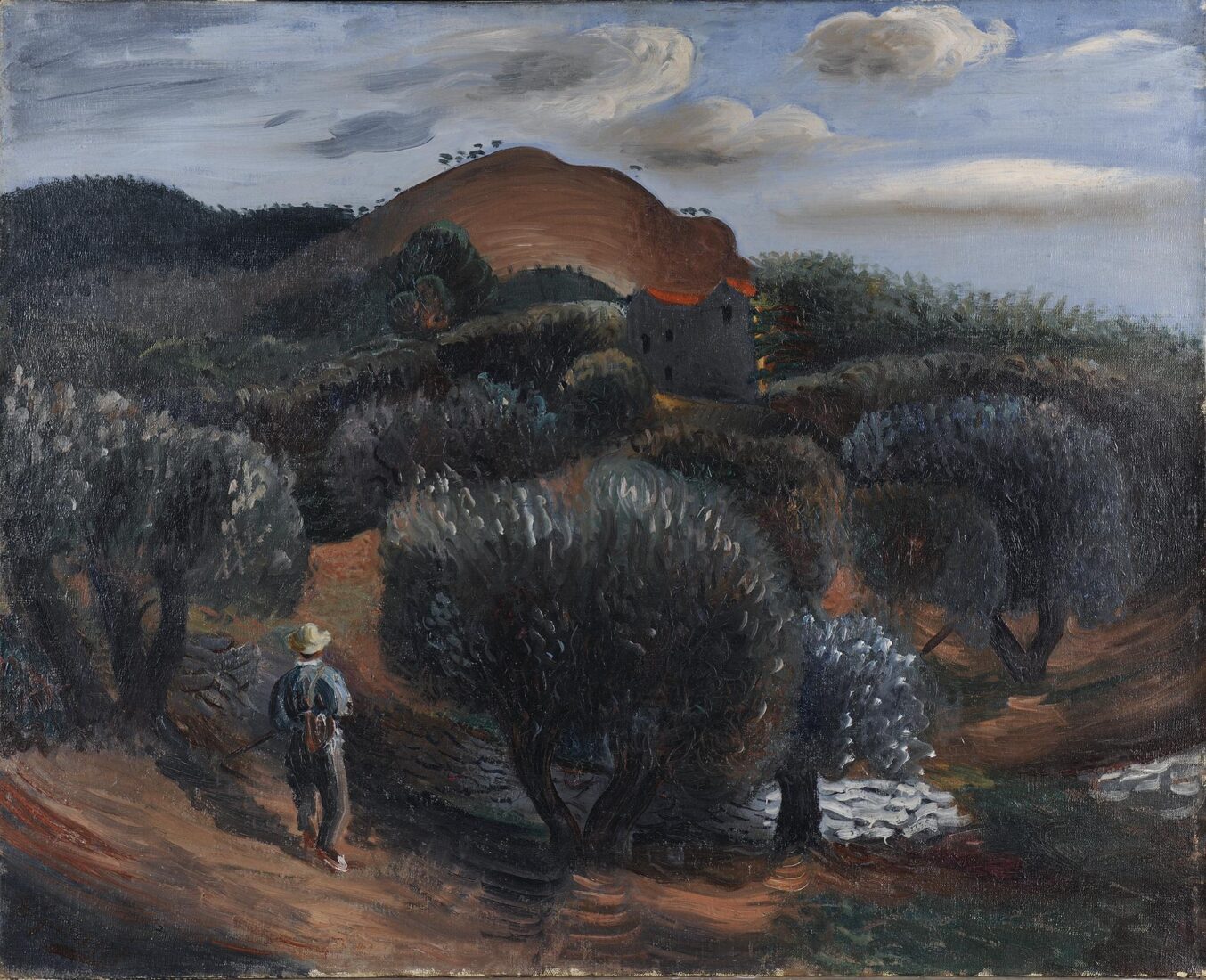
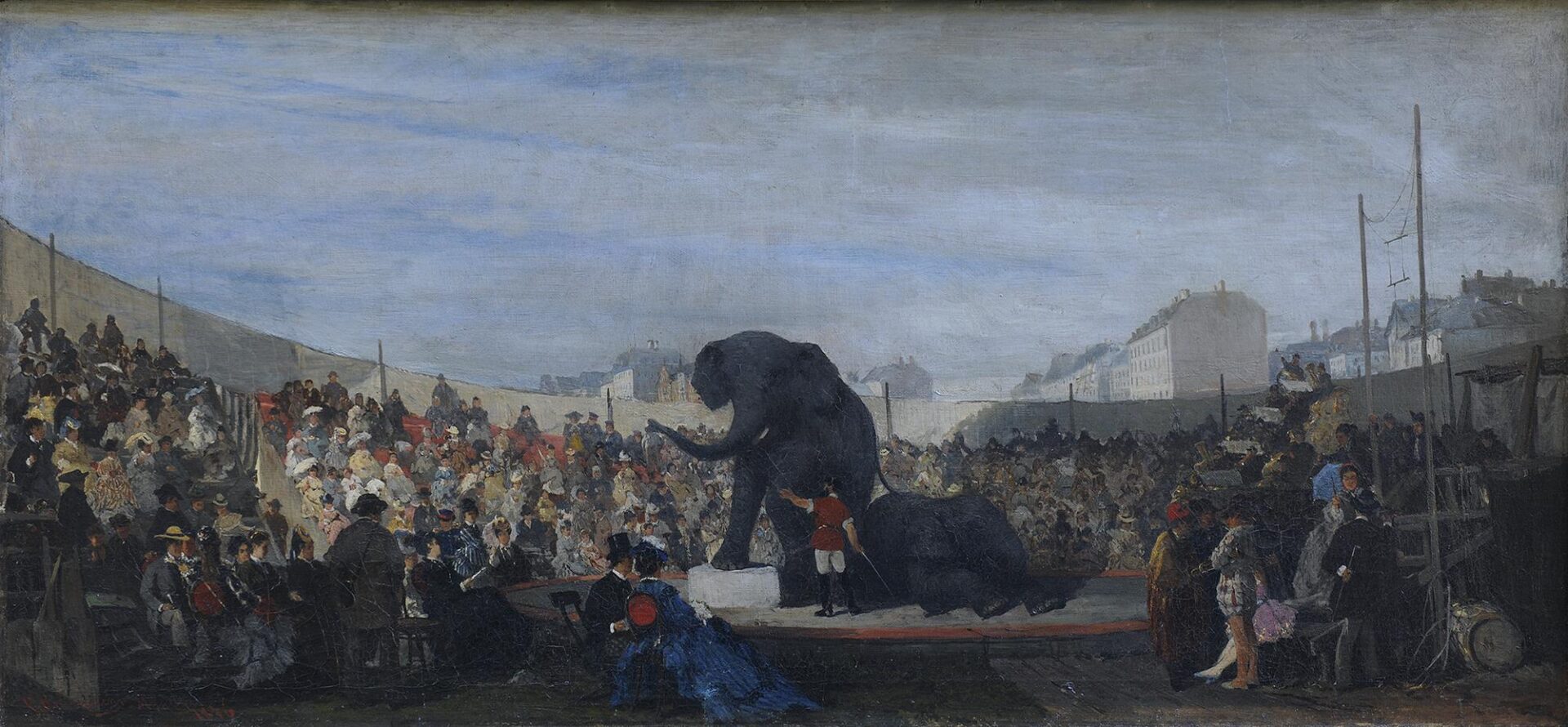
Konstantinos Volanakis is the greatest 19th century Greek seascapist. He mostly painted seascapes featuring beaches, ships, fishing boats, naval battles as well as historical subjects. This work is of a different content. It is a circus scene, such as those still performing today during the Oktoberfest in Munich. Spectators on the packed rows of an improvised theatre are watching the “acrobatics” performed by two elephants on a round stage, led by an animal tamer. The spectators sitting in the foreground, dressed in colourful period clothes and hats, project like dark shadows, while behind them the left part of the amphitheatre is intensely lit, making the colourful crowd glow with a multitude of colours. The shaded right part is rendered in dark tones. The work has been painted in free brushwork of pure paint, suggesting that Volanakis was already familiar with the discoveries of the French Impressionists. Indeed, as early as 1869, the Impressionist movement and Outdoor painting had already begun to become known in Munich. Similar crowd paintings were painted by Manet and Renoir in Paris.
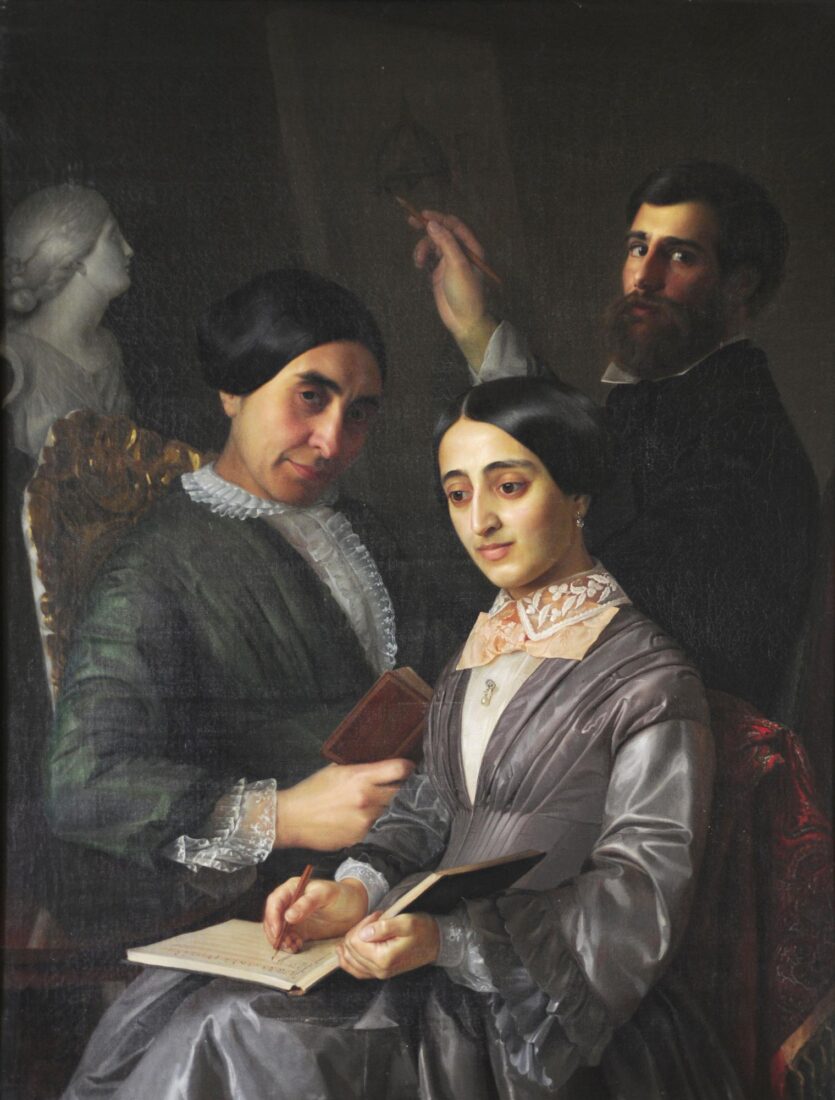
There is an allegory concealed in this family portrait. The painter lived in Florence, where the echo of a literary debate concerning the respective merit of the Liberal and the Fine Arts was still alive: Were the Fine Arts (painting, sculpture, architecture) equal to the noble Liberal Arts? The painter proposed his own answer in this painting, in which the Fine Arts exist side by side with the Liberal Arts. The artist himself becomes the symbol of the art of painting; the dome of the Florence Cathedral, shown depicted in the painting within the painting, suggests architecture, while invoking at the same time the city in which the artist lived. The bust of a classical Muse on the left suggests sculpture. These three fine arts coexist with poetry (symbolised by the small book held by the artist’s mother in law, Euphemia Kambani), while his wife, Zoe Kambani is writing down musical notes, suggesting music. Of excellent arrangement, the composition is inspired by Renaissance models. Gravely suffering from tuberculosis, Zoe Kambani was to perish soon afterwards.
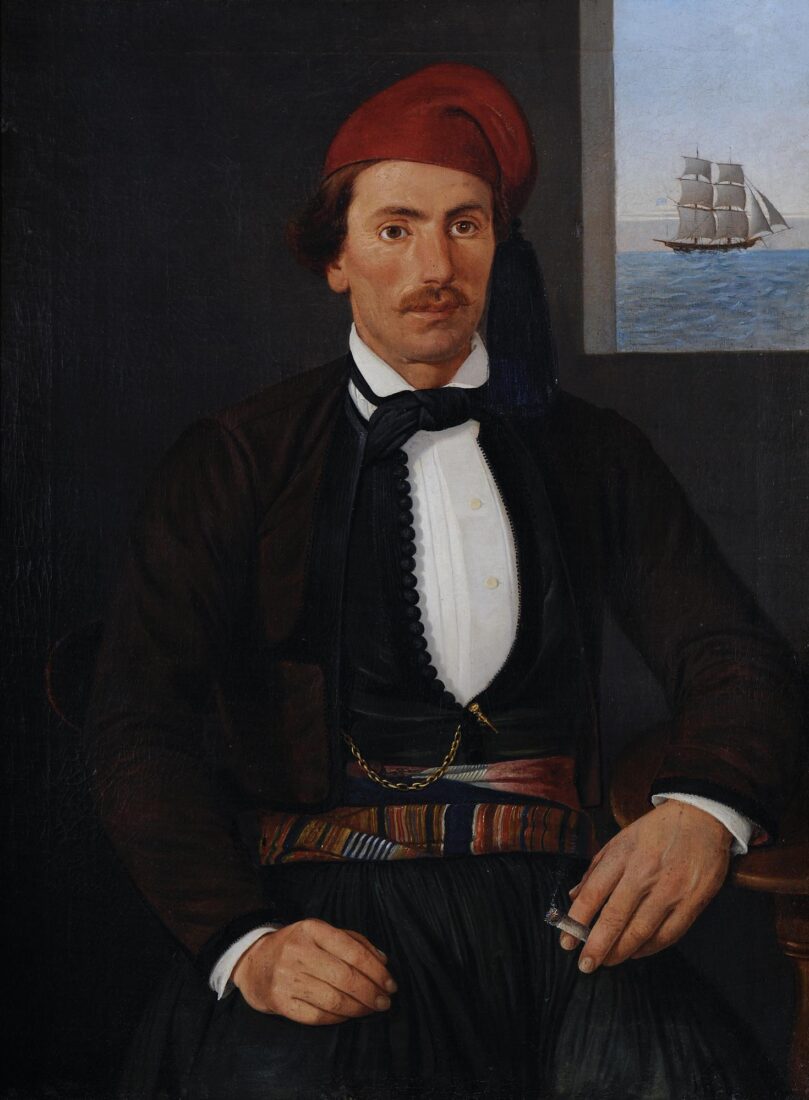
The descendant of a prominent maritime family of Hydra, Kriezis studied painting and engraving in Paris. Like Pige, he blends folk and academic elements in his painting. Unlike him, he uses the brown colour of academic painting and models volume through chiaroscuro.
The captain from Psara is portrayed in a proud frontal pose, looking at the viewer, a lit cigarette in his fingers. He is wearing the traditional costume of his island. Through the open window can be seen a vessel with all sails open. This detail is emblematic of the sitter’s professional occupation as a captain.
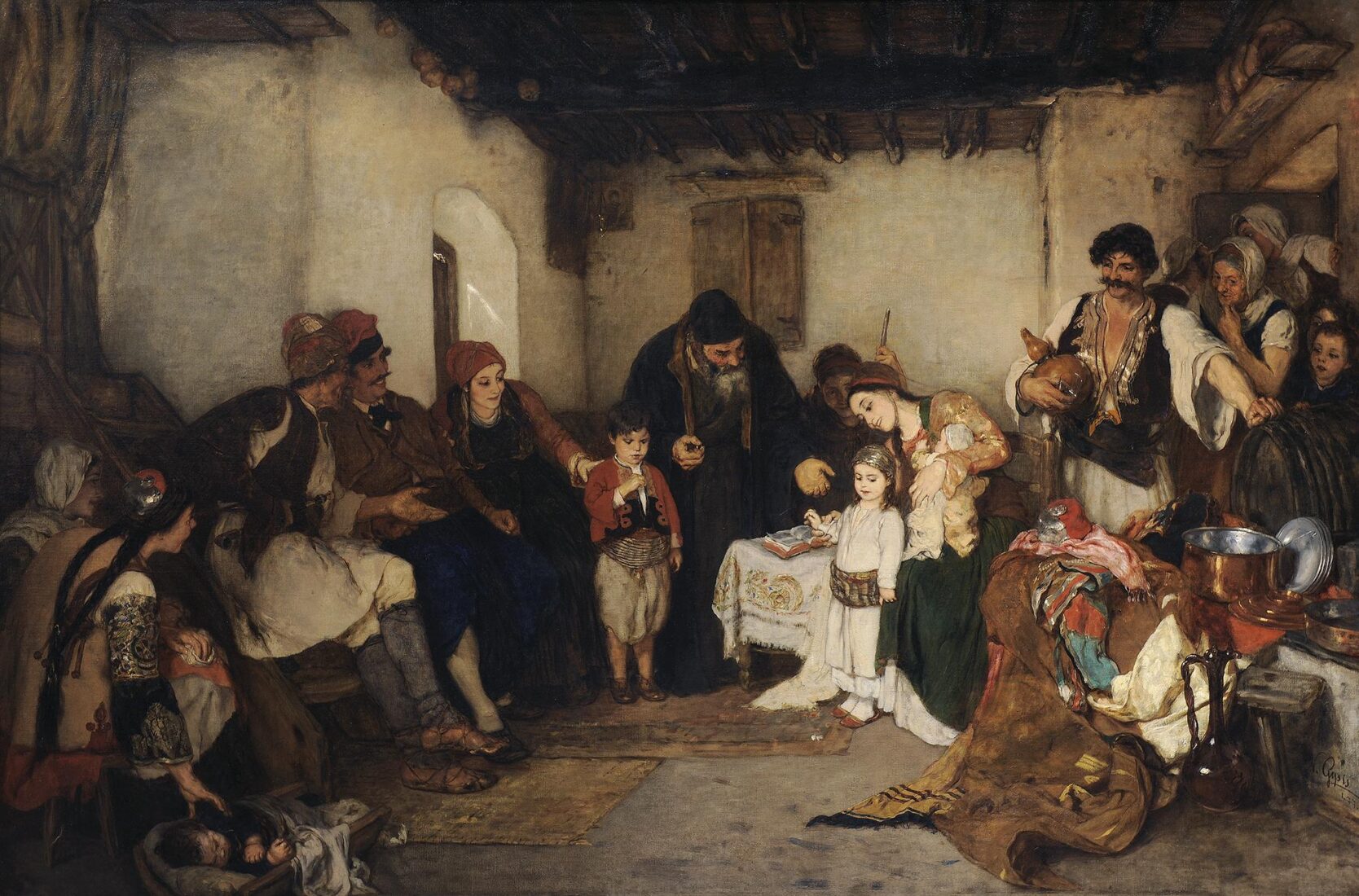
Having received numerous awards, the “Betrothal of the Children”, which exists in two variations, records a custom from Ottoman times. The parents engaged their children while still at a very young age, perhaps in order to protect them from being abducted by Turks. Arranged in a semi-circle in a village home interior, the merry scene is masterfully captured. In the centre of the painting, the priest has already put the ring around the puzzled boy’s finger, while the little girl is looking down, shying away from the old man’s call to come forward for the ring. The parents and other relatives merrily witness the scene. A man wearing the traditional Greek fustanella kilt is holding the wine vessel, a simple water pumpkin, ready to seal the event with a toast. On the right, the artist has placed a pile of utensils and luscious textiles, offering him ample opportunity to show off his skill in capturing profuse colour and variety in textures, from shiny bronze to silk. Warm gold-red hues and white colour prevail.The work was made after Gyzis’ journey-pilgrimage to Greece and the Orient in 1872-3, along with his friend, compatriot and teacher, Nikephoros Lytras. It records his impressions from the colourful world of the Orient, the rich costumes and customs of the Greek people.
